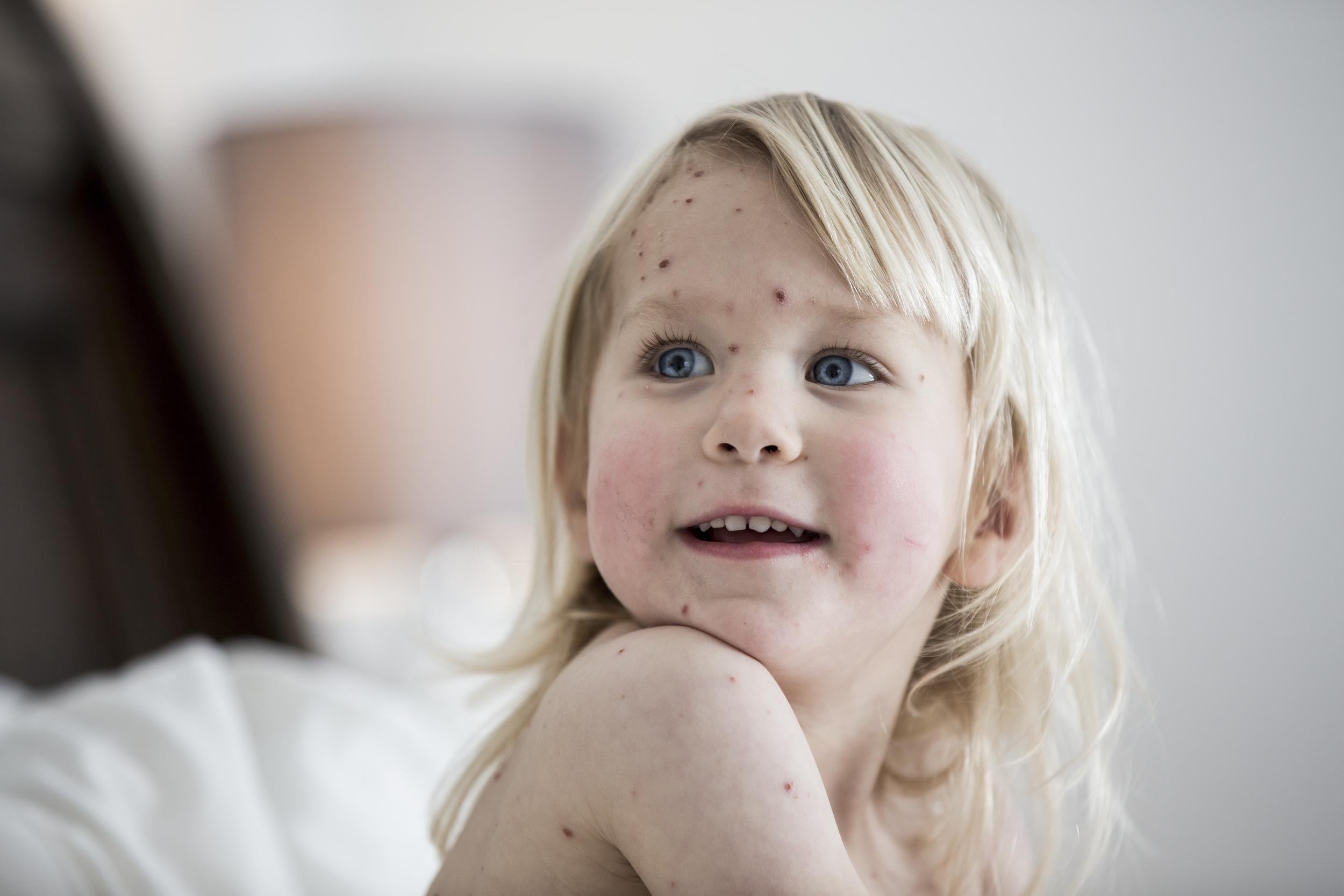The Independent's journalism is supported by our readers. When you purchase through links on our site, we may earn commission.
A guide to chickenpox: the signs, symptoms and how to treat it
The troublesome infection is common at this time of year - here's how to help your child through it


Chickenpox is a very common illness that sees around 90 per cent of UK children catch the virus at some point, most commonly between March and May.
While it isn’t usually serious, it is very infectious, and can be passed on just by being in the same room as an infected person, or through contact with the liquid inside the blisters. Although usually a mild illness, chickenpox can cause distress and discomfort for your child, but there are plenty of ways you can help ease symptoms.
The signs
Chickenpox begins with the appearance of red spots, which can form anywhere on the body and often emerge in clusters. Later, they fill with fluid and blisters form, becoming very itchy, before they scab over and drop off . Some children have just a few spots, while others can be covered in them, with the most common areas being the torso, arms, legs, armpits, face and scalp.
Other symptoms of chickenpox can include a high temperature, aches and pains, nausea, loss of appetite, and a general feeling of being unwell. In many cases, though, children can seem otherwise well, with the itchy spots causing the greatest discomfort.
How to help
While there’s no cure for chickenpox, there are things you can do to help your child. Paracetamol can help with fever and aches (although ibuprofen and aspirin should be avoided) , and a cooling gel or calamine lotion can help to soothe itching , as can wearing loose, soft clothes. In children over one year, Piriton Syrup is an antihistamine which can help reduce itching. This can be especially helpful when symptoms occur at night, helping the infected child - and therefore the whole house - to sleep better. By reducing itchiness and scratching, it also makes scarring and infection less likely.
Chickenpox is infectious until all spots have scabbed over, which usually takes around five days. As the virus can cause serious problems for certain groups, such as pregnant women and those with weakened immune systems, you should keep your child at home while they are infectious.
What to watch out for
While chickenpox doesn’t usually require a trip to your GP, seek medical advice if the skin around the spots starts to look infected, your child becomes dehydrated or has breathing difficulties, or if their fingers and toes feel cold.
Click to find out more
Help at hand
If your child is suffering from chickenpox you’ll want to help soothe their symptoms and make them as comfortable as possible. Piriton Syrup from 12 months of age and Piriton Allergy Tablets from 6 years of age, can offer effective relief from the itchiness of chickenpox. Find out more here, or click here to buy online. (i)(ii)
Piriton Syrup and Piriton Allergy Tablets contain chlorphenamine maleate for allergy relief. Always read the label. (i)(ii)
(i) Piriton Syrup- Summary of Product Characteristics:
https://www.medicines.org.uk/emc/product/3928/pil
(ii) Piriton Tablets- Summary of Product Characteristics:
https://www.medicines.org.uk/emc/product/3927/pil
CHGBI/CHPIRI/0031/18
Trademarks are owned by or licensed to the GSK group of companies.